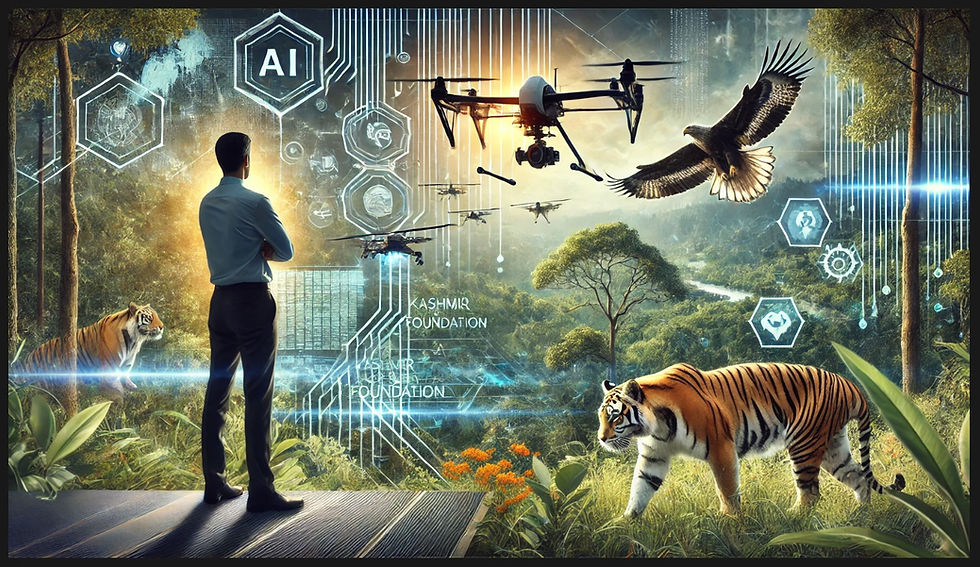The Importance of Trees
- Kashmir World Foundation

- Oct 16, 2019
- 3 min read
By Adnan Yousef
While Kashmir World Foundation’s primary focus is on the protection of endangered animals using drone technology, we are also excited about using our drones to aid in habitat

restoration. An upcoming project will see drones using machine learning to identify key species of trees while in flight. This technological development will enable conservationists with the tools to work with trees and habitats in new and exciting ways.
Trees are the tallest living organisms on earth and have the ability to absorb water and salt from the ground and transport it up to their leaves, sometimes 400 feet above ground level (Savatree). By means of photosynthesis, leaves combine the water and salt with carbon dioxide from the air to produce the nutrients which serve as food for trees. In this process, trees create wood, seeds, and fruit for the utility of humans.

Trees are very important for the environment because they sustain more than half of the biological species on the planet. Without them, we would all eventually die. Small animals live in them, and large animals eat small animals as a part of their natural diet and to maintain the ecosystem balance. Without trees, many animals would become extinct. Trees also provide shelter and camouflage for wildlife as well as oxygen for breathing.
The canopies of trees act as a physical filter, trapping dust and absorbing pollutants from the air. Each individual tree removes up to 1.7 kilos of pollutants every year. Trees also provide shade from solar radiation and reduce noise. Furthermore, trees tend to boost physical activity and social connection, dampen depression, reduce stress and lead to better physical health (Royal Park web). Trees reduce wind speeds and cool the air as they lose moisture and reflect heat upwards from their leaves. It’s estimated that trees can reduce the temperature in a city by up to 7°C (Royal Park web). Trees also help prevent flooding and soil erosion.

Additionally, trees host complex microhabitats. When young, they offer habitation and food to communities of birds, insects, lichen, and fungi. When ancient, their trunks provide the hollow cover needed by species such as bats, wood-boring beetles, tawny owls, and woodpeckers. One mature oak can be home to as many as 500 different species (Royal Park web).
People are attracted to live, work and invest in green surroundings. Companies benefit from a healthier, happier workforce if there are parks and trees nearby (US News). Soon, for the first time in history, the number of people with homes in cities will outstrip those living in the countryside (Study Moose). Parks and trees will become an even more vital component of urban life. We must respect and protect them for the future.

Trees strengthen the distinctive character of a place and encourage local pride. Urban woodland can be used as an educational resource and to bring groups together for activities like walking and bird-watching. Trees are also invaluable for children to play in and discover their sense of adventure. There is a dire need for programs that share the importance of trees among people; especially children, who would benefit from being involved in planting campaigns and programs. Using the new drone capabilities, KwF hopes to contribute to habitat restoration through 3-D mapping and machine learning tree identification.
“These trees and me, we're made for each other"
References
https://www.royalparks.org.uk/parks/the-regents-park/things-to-see-and-do/gardens-and-landscapes/tree-map/why-trees-are-important
https://studymoose.com/the-importance-of-trees-essay
https://health.usnews.com/wellness/articles/2016-12-09/the-many-health-benefits-of-trees
https://www.savatree.com/whytrees.html





Comments